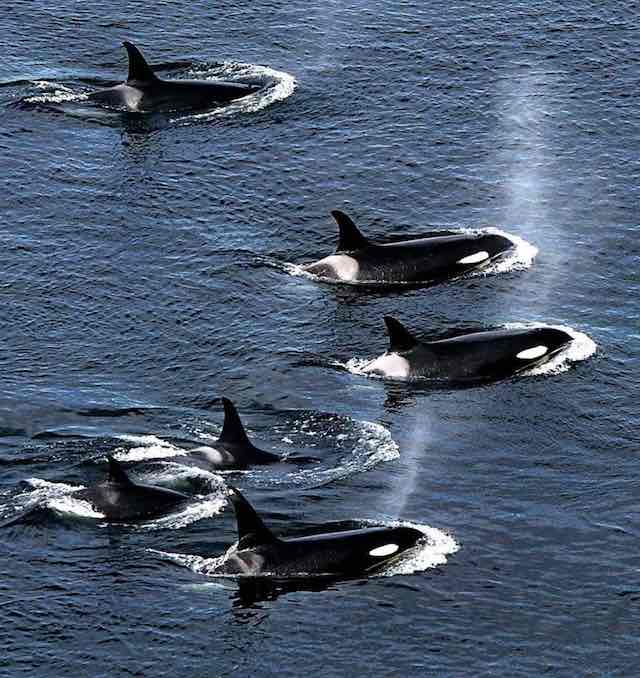forum
library
tutorial
contact

Ocean Predators
by John HarrisonNW Council, January 16, 2018
|
the film forum library tutorial contact |

|
Ocean Predatorsby John HarrisonNW Council, January 16, 2018 |
Killer whales and marine mammals pose a greater threat to Columbia River salmon
in the ocean than commercial and sport harvest, research shows.
 As the population of marine mammals along the West Coast from Central California to Alaska increased, their take of Chinook salmon also increased -- by more than 150 percent between 1975 and 2015, according a new paper in the journal Nature, and now surpasses commercial and recreational harvest as a source of adult Chinook salmon mortality in the ocean.
As the population of marine mammals along the West Coast from Central California to Alaska increased, their take of Chinook salmon also increased -- by more than 150 percent between 1975 and 2015, according a new paper in the journal Nature, and now surpasses commercial and recreational harvest as a source of adult Chinook salmon mortality in the ocean.
"One thing that has become apparent," Oregon State University and NOAA Fisheries researcher Brandon Chasco told the Council in a presentation at a recent meeting, "is that the Columbia River does a pretty good job of feeding predators." Chasco is the primary author of the paper, which has 13 co-authors.
In fact, Chasco said, during the same period that consumption of Chinook by federally protected marine mammals like seals, sea lions, and northern killer whales increased, harvest seasons in the ocean declined by 41 percent.
Columbia River Spring Chinook salmon appear to be a particular target. Southern resident killer whales, which spend most of the year in the Salish Sea, the area that includes the Strait of Georgia, the Strait of Juan de Fuca, and Puget Sound, will linger off the mouth of the Columbia River in the spring, waiting for Chinook. Adult Columbia River salmon are in the ocean from near the mouth of the river all the way to Alaska, where they are an important component of commercial and recreational fisheries.
"Because Columbia River fish have long migrations up to the Gulf of Alaska and Western Alaska, they are likely susceptible to a long list of marine mammal populations," Chasco said.
The Columbia produces a lot more Chinook salmon than other rivers, and therefore contribute more fish to the predators than other rivers. Even so, Chasco said it's possible salmon recovery efforts in the Columbia River Basin have been more successful than the annual adult returns would indicate because so many are killed in the ocean.
The researchers used a bioenergetics model of the Northeast Pacific Ocean to quantify how predation by harbor seals, Steller sea lions, California sea lions, and killer whales on Chinook salmon has changed since the 1970s along the west coast of North America, and compared these estimates to salmon fisheries. According to the paper, from 1975 to 2015 the biomass of Chinook salmon consumed by sea lions, harbor seals, and killer whales increased from 6,100 to 15,200 metric tons (from 5 million to 31.5 million individual salmon -- including jueveniles), with the largest biomass being consumed by killer whales. The concurrent harvest reduction in Chinook salmon was from 16,400 to 9,600 metric tons.
Other recent work by NOAA researchers has shown that the reproductive success of Southern Resident killer whales is highly correlated with Chinook salmon abundance, and that localized salmon predation by rebounding populations of seals and sea lions could be limiting the recovery of not only the salmon but of Southern Resident killer whales as well.
Related Pages:
UW Professor's Study Links Food Scarcity to Orcas' Failed Pregnancies by Lynda Mapes Seattle Times, 6/28/17
As the Chinook Go, So Go the Orcas by Peggy Andersen, Seattle Post-Intelligencer, 4/5/6
learn more on topics covered in the film
see the video
read the script
learn the songs
discussion forum
